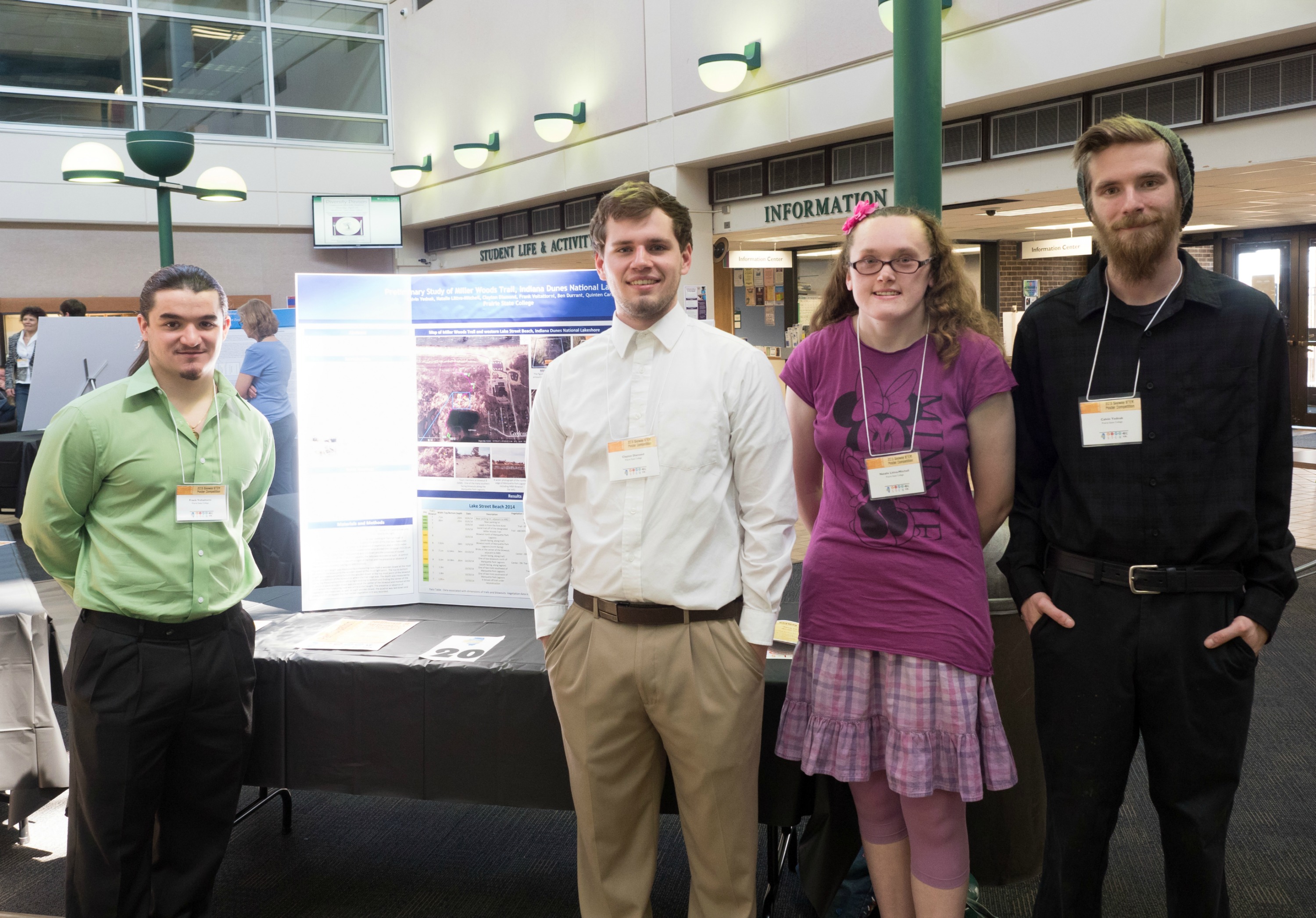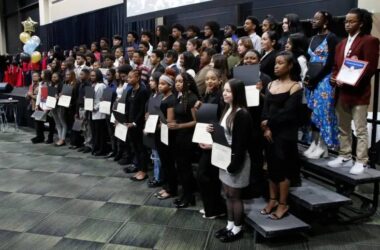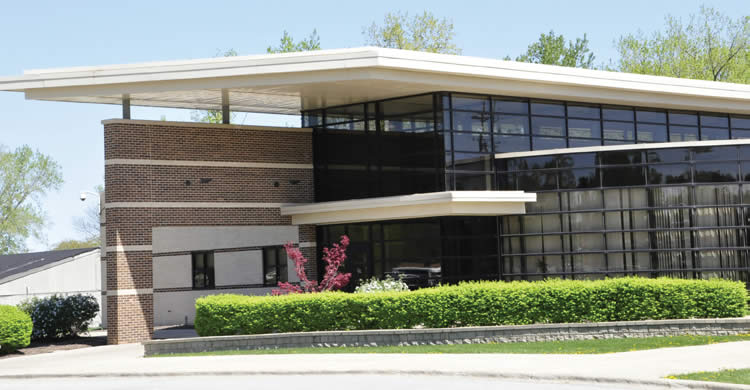 Prairie State College earth science students (from left) Frank Voltattorni, Clayton Diamond, Natalie Littva-Mitchell and Calvin Yednak presented their findings from a study of Miller Woods Trail on the Indiana Dunes National Lakeshore during the 2015 Skyway STEM Poster Competition.
Prairie State College earth science students (from left) Frank Voltattorni, Clayton Diamond, Natalie Littva-Mitchell and Calvin Yednak presented their findings from a study of Miller Woods Trail on the Indiana Dunes National Lakeshore during the 2015 Skyway STEM Poster Competition.
CHICAGO HEIGHTS–(ENEWSPF)–June 8, 2015. When visiting the Indiana Dunes this summer, visitors should be mindful of where they step, according to a study conducted by Prairie State College (PSC) earth science students under the leadership of PSC Associate Professor Leanne Burrough.
The study, “Preliminary Study of Miller Woods Trail, Indiana Dunes National Lakeshore,” recently was presented at the Skyway STEM Poster Competition hosted at PSC. And, due to generous special funding from the PSC Foundation, the students also were able to present their findings at Wild Things 2015: Conference Sessions hosted earlier this year at the University of Illinois at Chicago.
Indiana Dunes National Lakeshore recently extended the Miller Woods Trail through the foredune area to the beach. This new trail provided students the opportunity to study the impact of visitors on the ecosystem. Students Natalie Littva-Mitchell of Crete, Frank Voltattorni of Chicago Heights, Clayton Diamond of Chicago Heights and Calvin Yednak of Steger collected the data in October and November 2014, and documented the vegetation and dimensions of social trails and blowouts along a new extension of the trail.
The study focused on providing a baseline for future studies in changes of dune structure due to natural erosion and human impact. Heavily used park areas have a web of unofficial ‘social trails,’ which destroy vegetation and destabilize the dunes. During the study, these trails and blowouts were mapped and measured, and vegetation was documented. The intent is that future work will show how the area is affected as visitor use increases.
One of the students, Yednak, took the time to discuss the study and his passion for the subject matter. He said the social trails are created when people take shortcuts to get to the beach faster. A quick glance at Google Earth shows how the surface of West Beach appears like spider webs, he added.
All of those trail extensions are social trails, he said. And, he points out that it doesn’t take much to create one, but the effects can last much longer.
“It only takes five people to make a social trail and 10 years for that trail to reconstruct itself,” he added.
Yednak, who hopes to teach geology and geography at the elementary school level after earning his degree from Governors State University, says it is important to keep everyone educated about this type of negative effect people can have on the environment
“You have to put your faith in the public that they will realize what they need to do,” he said. “We live on this earth, so we should try to keep it as protected as we can.”
He hopes that his career choice might make a small impact on furthering the message. “If the youth knows about the environmental issues, they can continue to pass the message on.”
Source: www.prairiestate.edu








